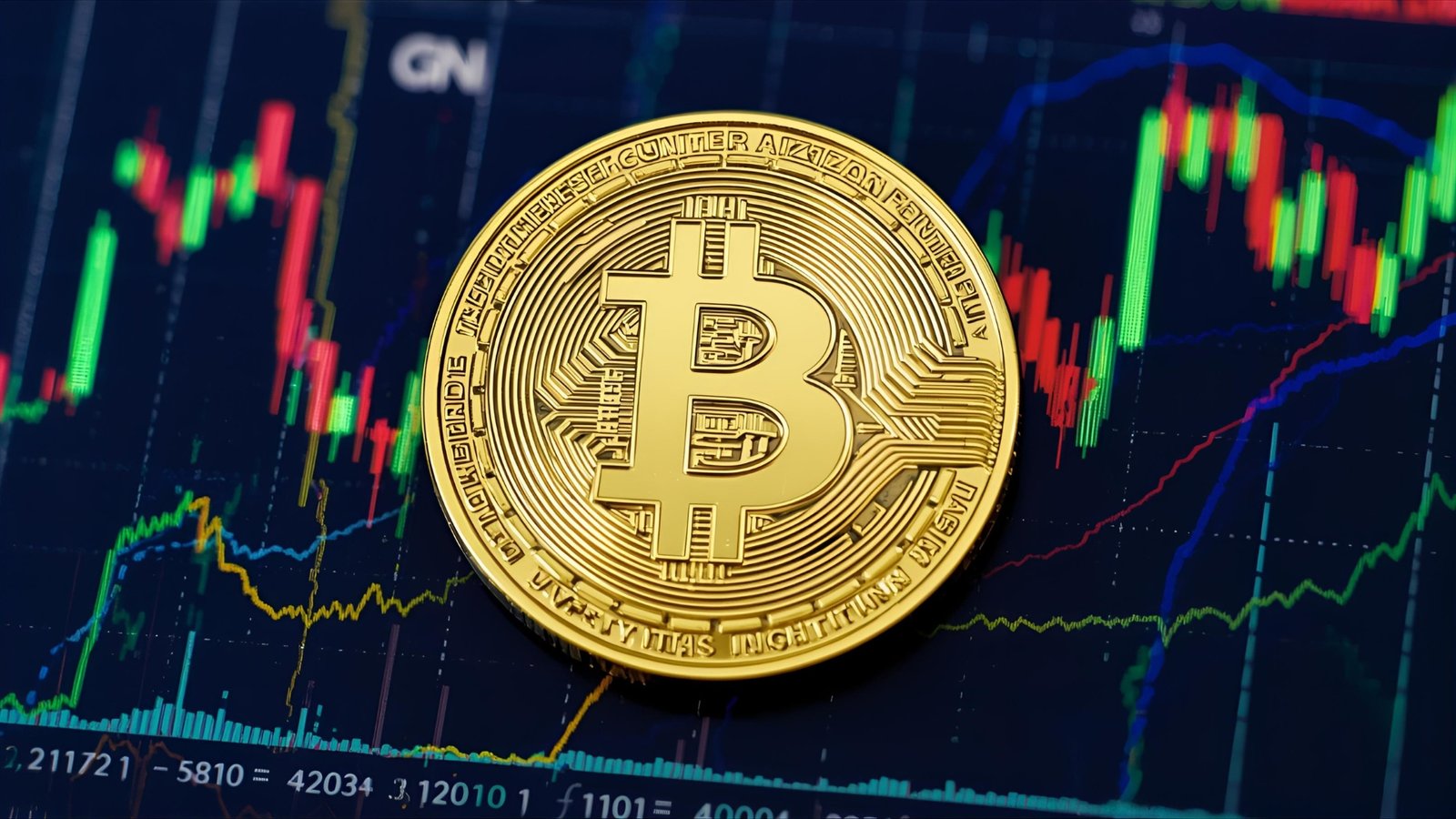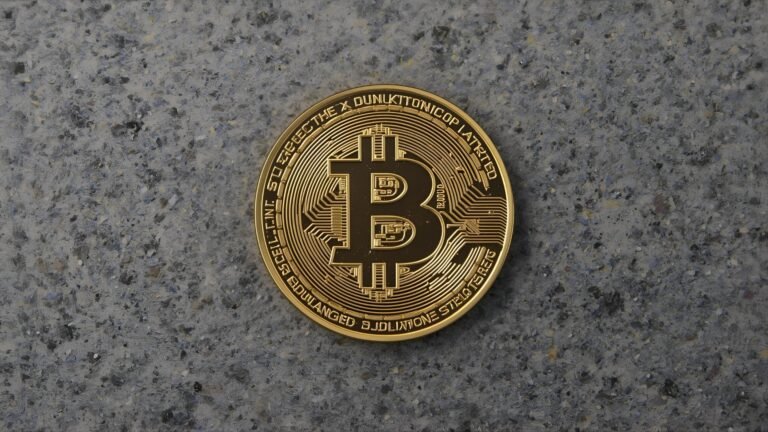The United States is in the middle of a high-stakes policy fight over Crypto Market Structure legislation—who regulates which tokens, how exchanges can operate, what disclosures issuers owe investors, and how to police DeFi, stablecoins, and market integrity. Republicans and Democrats agree on one thing: the current patchwork of case law, enforcement actions, and agency guidance has left the digital asset economy without predictable rules. They split, however, on the center of gravity for oversight—SEC versus CFTC—and on how far new statutes should go in dialing up consumer protection, anti-money laundering controls, and systemic risk safeguards.
This clash has unfolded over several legislative cycles. The House of Representatives passed the Financial Innovation and Technology for the 21st Century Act (FIT21) in May 2024 with a bipartisan majority, but the White House and the SEC signaled opposition, arguing the bill could weaken long-standing securities protections. In 2025, the Senate turned to its own packages: a bipartisan stablecoin framework that passed the chamber in June, and a separate—and more contentious—market-structure draft shepherded by Republican leaders with input from some Democrats but resistance from others, labor groups, and investor advocates. The result is an unusually public tug-of-war over how to define “digital commodities,” when a token stops being a security, and which agency will be in the driver’s seat.
How we got here: FIT21 and the first big House push
A bipartisan House vote, tempered by executive-branch skepticism
On May 22, 2024, the House approved FIT21 (H.R. 4763) in a 279–136 vote. The bill aimed to create a clearer digital asset market structure, including delineating when the CFTC would oversee a token as a digital commodity and when the SEC would treat it as a security—particularly during the murky phase when a network is decentralizing. Sponsors argued that a “functionality and decentralization” test would move assets with sufficiently decentralized ledgers into the CFTC’s remit, alongside trading venues registered under commodity law.
Even as that vote landed, the White House issued a Statement of Administration Policy signaling it did not support FIT21 as written and wanted more time to craft guardrails with Congress. SEC Chair Gary Gensler also warned the bill could undermine decades of investor protections baked into federal securities law. Those signals mattered: any House-driven crypto framework would still have to survive the Senate and the President’s desk.
A veto that hardened the lines
Days later, the administration vetoed a Congressional Review Act resolution to overturn the SEC’s SAB 121, an accounting bulletin that effectively makes it costly for banks to custody crypto on balance sheet. To Republicans and many industry voices, the veto telegraphed a posture of deference to the SEC and skepticism of rapid deregulatory moves. To Democrats supportive of the veto, keeping SAB 121 in place preserved prudential caution while rulemaking matured. The veto hardened negotiating lines for the next round of legislation.
The Senate’s two-track effort in 2025
Stablecoins: an easier on-ramp for consensus
In June 2025, the Senate passed a stablecoin bill in a 68–30 vote, with support from many Republicans and a notable bloc of Democrats. The measure laid out reserve, auditing, and issuance requirements and clarified who could issue payment stablecoins. Even critics conceded that stablecoins were the low-hanging fruit—clearly within the payments stack and amenable to banking-style regulation. The bill moved to the House with momentum, though there were warnings that trying to bolt-on broader market-structure provisions could slow everything down.
Market structure: the harder, more political lift
Parallel to stablecoins, Senate Republicans—led by Banking Committee Chair Tim Scott and Sen. Cynthia Lummis—released a discussion draft of broader crypto market structure legislation in late summer 2025. The draft built on, but did not mirror, the House’s earlier push. It sought statutory clarity on when tokens transition from securities to commodities, what disclosures apply at issuance and on secondary platforms, and how to register crypto trading venues. The draft prompted an RFI to solicit public input—an acknowledgment that the details would determine whether market participants gain clarity or face new complexity.
By early October, however, negotiations had boiled over. Republicans pushed for a firm markup date; Democrats circulated their own language—especially around DeFi—and objected to what they saw as a rushed timeline. Industry-friendly outlets criticized a leaked Democratic approach as too restrictive; Democrats countered that it reflected necessary AML and consumer-protection expectations in decentralized environments. The public spat suggested that, unlike stablecoins, market structure is where ideological and institutional divides truly bite.
What each party wants (and what they won’t accept)

Republican priorities: clarity, CFTC leadership, and innovation signaling
Republicans have framed the fight as a competitiveness issue: the U.S. risks losing talent and liquidity if tokens cannot list and trade under clear rules. Proposals out of the House in 2024 and Senate in 2025 generally elevate the CFTC for assets that are “functional and decentralized,” and set up registration pathways for digital commodity exchanges modeled loosely on existing derivatives market structures. Republicans also tend to favor disclosure regimes tailored to on-chain projects rather than grafted from public-company securities law—arguing that whitepapers, code repositories, token distributions, and validator incentives are the data that matter most.
At the same time, GOP leaders have tried to pair this clarity with prudential guardrails in discrete areas (for example, stablecoin reserve rules), signaling that not all crypto legislation is deregulatory. The Senate’s stablecoin bill, with its reserve and audit framework, illustrated that Republicans were willing to enshrine guardrails so long as the statute did not collapse innovation under securities-style burdens.
Democratic priorities: investor protection, SEC primacy, and DeFi accountability
Democrats are not monolithic. Some moderates backed the stablecoin bill and previously supported FIT21 in the House; others—especially progressives—warn that shifting tokens too quickly out of SEC oversight would invite fraud and consumer harm. The administration’s 2024 SAP on FIT21 and Gensler’s statement reflect a throughline: keep the Howey framework front-and-center, preserve the SEC’s ability to address information asymmetries, and avoid inadvertently immunizing token distributions that look like public offerings.
Democrats have also trained attention on DeFi. A leaked Democratic position paper, reported in October 2025, drew fire from industry groups for allegedly “strangling” decentralized protocols. Supporters argue that KYC/AML expectations and gatekeeper obligations must attach somewhere—interfaces, front-ends, or governance participants—so bad actors cannot launder proceeds at scale. The divide is less about whether to regulate DeFi than how to assign responsibility without driving activity to unhosted, offshore interfaces.
The stakeholders shaping the fight
Regulators and the “two sheriffs” problem
The friction between the SEC and CFTC is not new. Bills on the table force Congress to decide when a token is a security—subject to disclosure, registration, and anti-fraud rules—and when it is a commodity trading on CFTC-registered venues.
Through 2025, the agencies have tried to project coordination, rejecting rumors of a merger while talking up “harmonization” on digital assets. But harmonization without statute still leaves courts to resolve edge cases, and firms must navigate rulemaking by enforcement. That uncertainty is precisely what market structure bills are meant to cure—and why their drafting details matter so much for both agencies’ futures.
Labor unions, banks, and investor advocates
The debate is no longer confined to crypto natives. In October 2025, the AFL-CIO—the largest U.S. labor federation—sent a letter opposing the Senate’s Responsible Financial Innovation Act draft, arguing it offered a façade of regulation that could expose retirement savings to volatility. Community banking groups, meanwhile, focused on stablecoin safeguards and supervisory clarity. The result is a broader coalition landscape: industry pushing for certainty; unions and investor groups pressing for stronger consumer protections; and financial intermediaries asking Congress to avoid rules that either de-bank crypto entirely or force risky custody models.
What’s actually in “crypto market structure” legislation?
The definitional core: when a token “decentralizes”
Most proposals hinge on a definitional switch: assets begin life as securities when sold to raise capital but may transition to digital commodities once the network reaches “functional” status and sufficient decentralization.
That determination would cue CFTC oversight for trading and anti-manipulation enforcement, while leaving the SEC to police offerings and any tokens that still rely on a managerial enterprise. FIT21 previewed this approach in the House; the Senate draft explores similar mechanics but wrangles over which disclosures persist after decentralization and how to measure network functionality.
Exchange registration and market plumbing
Another pillar is exchange and broker-dealer registration for crypto platforms. The aim: bring centralized venues into compliance—surveillance sharing, segregation of customer assets, conflict-of-interest controls—without forcing them into impractical molds built for national securities exchanges or futures markets. Expect detailed provisions on custody, segregation of client assets, proofs of reserve, and market surveillance. Republicans tend to favor bespoke regimes under the CFTC for commodity-like tokens, while Democrats want to ensure SEC rules apply whenever securities are listed or where functions mirror a traditional ATS.
Disclosures that fit crypto’s realities
Bills contemplate a disclosure taxonomy anchored in crypto-specific facts: token supply schedules, governance rights, validator economics, code repositories, audit histories, and the identities/compensation of core developers. Republicans see this as a right-sized substitute for public-company filings; Democrats view it as an adjunct—not a replacement—when Howey still applies. The hard question is how long these disclosures persist after a network’s launch and who certifies their accuracy.
DeFi and the locus of accountability
DeFi is the policy thicket. Proposals explore obligations on front-end providers, aggregators, and entities that exercise governance control. Democrats emphasize AML/CFT controls and sanctions compliance at these chokepoints; Republicans warn about over-breadth that could push users to unregulated back-ends. The emerging compromise space is principle-based: require “reasonable, risk-based” measures for interfaces that facilitate access to financial services—with safe harbors for purely non-custodial tools that demonstrably lack control over execution or funds. The October 2025 flare-up shows this line-drawing is still in flux.
Political dynamics: why the parties are clashing now
The tech-competitiveness narrative vs. the Enron-era memory
Republicans have leaned into a competitiveness narrative—pointing to Europe’s MiCA regime and Asia’s licensing frameworks as magnets for capital and entrepreneurship. Democrats, particularly progressives, are haunted by the lessons of Enron, 2008, and recent crypto blowups: if Congress codifies a lighter-touch regime too soon, retail investors may shoulder the downside. The White House’s 2024 posture toward FIT21 and the SAB 121 veto strengthened the hand of Democrats who want to keep SEC leverage intact while crafting any new exemptions carefully.
Bipartisanship is real—but issue-specific
The Senate’s stablecoin vote revealed genuine bipartisan appetite for targeted rules where risks look like familiar banking problems. But that bipartisanship is not (yet) transferrable to the harder market-structure questions—especially DeFi, exchange registration, and the test for “decentralization.
Moderate Democrats have shown willingness to negotiate; progressive Democrats and consumer-protection advocates remain wary; Republicans want pace and predictability. With labor now on record as skeptical, the incentive for Democrats to slow-walk the broader bill has increased.
Practical implications for builders, investors, and institutions
Short-term: prepare for dual-track compliance
Until Congress acts, expect continued SEC enforcement at the offering level and CFTC actions against fraud and manipulation. Institutions eying custody or tokenization should plan for SAB 121’s effects on capital and for bank supervisors’ scrutiny.
Crypto venues should assume exchange-like controls—surveillance, segregation, conflict management—will be prerequisites for any registration path that emerges. Risk-based AML programs for interfaces and DeFi front-ends are not optional; they’re increasingly table stakes in the legislative drafts.
Medium-term: stablecoin rails first, market structure later
If the House aligns with the Senate on stablecoins, regulated dollar-token rails could expand in payments, remittances, and on-off ramps. That, in turn, could lower friction across crypto markets even before a comprehensive market-structure statute lands. But if lawmakers try to yoke the two together, they may slow both. That’s why many advocates urge a sequenced approach: pass payment-token rules now; keep negotiating the contentious line-drawing on securities vs. commodities.
Long-term: clarity will reset the map—winners and losers
A final statute will pick winners. If the CFTC emerges with clearer jurisdiction over decentralized assets and exchanges, commodity-style venues and spot markets could flourish under futures-market-inspired surveillance. If SEC keeps decisive power over a wide swath of tokens, expect longer transition periods and heavier disclosures, shifting listings toward issuers willing (and able) to meet securities-grade obligations. Either path could stabilize the rule of the road and crowd-in institutional capital—but they imply very different compliance builds and margin structures.
Also Read: Poland’s crypto bill advances amid fierce backlash
Key flashpoints to watch as negotiations continue

The “sufficient decentralization” test
How objective is the test? Are there quantitative metrics (e.g., validator dispersion, on-chain concentration) or a holistic “facts and circumstances” standard? FIT21 leaned toward a functionality/decentralization lens; the Senate draft is juggling optics and enforcement realities. The more formulaic the test, the easier it is to plan—but the higher the risk of gaming.
DeFi interface obligations and safe harbors
Where Democrats see AML chokepoints, Republicans see innovation chokepoints. A sensible landing zone may codify good-faith, risk-based controls for interfaces that solicit U.S. users, combined with safe harbors for open-source tooling that never takes custody or exercises control. Expect heated markup negotiations here.
Exchange registration mechanics
Should a crypto exchange that lists commodities and securities be able to register under a unified regime, or must it bifurcate operations? Who supervises custody and segregation? Hybrid models risk complexity, but siloing by asset type could be commercially impractical.
Interagency dynamics
Even absent a merger, the SEC and CFTC must coordinate surveillance, enforcement, and guidance. Officials recently emphasized collaboration over consolidation; a statute could formalize joint rulemaking and information-sharing to reduce regulatory arbitrage.
Constituency pressure
Labor’s opposition adds weight to progressive concerns. Banking groups will push for clear stablecoin supervision and custody capital treatment. Industry coalitions will warn that ambiguous standards keep America on the sidelines while other jurisdictions race ahead. The balance of these voices will shape how far either party is willing to go.
Why this clash matters beyond crypto
Crypto market structure legislation isn’t just about tokens; it’s about how Congress updates a 20th-century regulatory architecture to handle programmable finance. The choices lawmakers make—what counts as a security, how to regulate code-mediated markets, and how to impute responsibility in decentralized systems—will ripple into tokenized deposits, on-chain treasuries, and real-world asset markets. The road to clarity is messy, but the prize is a transparent, enforceable framework that lets compliant innovation proceed without a constant fear of retroactive enforcement.
Conclusion
The U.S. is closer than ever to a durable framework for Crypto Market Structure regulation, but there are two different speeds. Stablecoins have found a plausibly bipartisan glide path; market structure remains a battleground over SEC vs. CFTC primacy, DeFi accountability, and the definition of decentralization. Republicans want faster clarity and more room for the CFTC; Democrats are pressing for stronger, securities-grade investor protection and explicit AML/CFT obligations for decentralized systems.
The outcome will determine not only the compliance roadmap for exchanges and issuers but also whether the next wave of financial infrastructure is built in the U.S. or somewhere else. For builders, investors, and institutions, the strategic play now is to prepare for both paths: adopt bank-grade risk controls and disclosures, and design systems that can live under either securities-centric or commodities-centric oversight. When Congress finally lands the plane, those already aligned with the likely obligations will be first in line to scale.
FAQs
What is “crypto market structure legislation,” and how is it different from stablecoin bills?
Market-structure legislation defines who regulates which digital assets, what disclosures apply, and how trading venues register and operate. Stablecoin bills focus narrowly on dollar-pegged tokens, setting reserve and issuance rules. The Senate passed a stablecoin bill in June 2025, while broader market-structure rules remain under negotiation.
Why do Democrats and Republicans disagree most on DeFi?
DeFi complicates traditional supervision. Democrats want enforceable AML/CFT and consumer-protection duties at the interface level; Republicans caution that over-broad obligations will push users to unregulated back-ends. A leaked Democratic proposal drew industry criticism for being too restrictive, underscoring how unsettled this question remains.
What would FIT21 have changed if it became law?
FIT21 would have codified when tokens transition from securities to commodities based on functionality and decentralization, giving the CFTC clearer authority over trading of such assets and establishing registration regimes for platforms. The administration and SEC objected, warning it could undermine investor protections.
How did the SAB 121 veto affect the politics?
By vetoing the resolution to overturn SAB 121, the administration signaled caution about bank crypto-custody and support for the SEC’s technical guidance. Republicans and many industry groups criticized the move, but it strengthened the hand of Democrats prioritizing prudential and investor-protection concerns.
When could a comprehensive market-structure bill realistically pass?
The Senate is still debating core issues, and negotiations have recently hit turbulence, with partisan disputes over timelines and DeFi provisions. A near-term deal is possible but uncertain; many observers expect stablecoins first, with broader market structure potentially following after additional compromise and stakeholder input.


